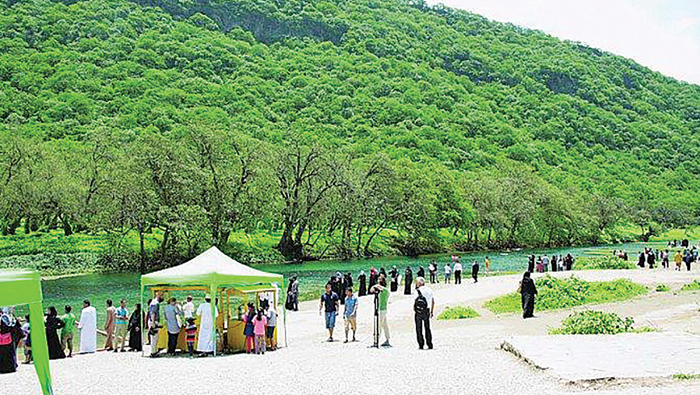
Muscat: The number of tourists during the Khareef Salalah “Monsoon season” during 2017 marginally dropped by 1.2 per cent to 644,931 tourists from 652,986 during the 2016 season.
However, the expenditure made by the tourists rose to OMR66 million compared with OMR65 million in 2016, according to the data released by the National Centre for Statistics and Information (NCSI).
According to a survey conducted by the NCSI between June 21 and September 21, 2017, average per capita expenditure increased from OMR101 per person in 2016 to OMR103 in 2017.
The occupancy expense hit 35.3 per cent of total tourism expenditure while spending on shopping, transportation and entertainment was 22.4 per cent, food and drink comprised 22.6 per cent of the total tourism expenditure.
In July and August, hotel revenue from food and drink in the Governorate of Dhofar recorded the highest level with 82.6 per cent and 70.8 per cent respectively. Other revenues of the hotels increased in July and August, reflecting a clear increase in tourists’ spending on other items. In total, leisure and entertainment tourism was 90.8 per cent which is valued as OMR60 millions of the total tourism expenditure in 2017. Business tourism valued as 5.2 per cent of total expenditure.
The total withdrawals from ATMs in the Governorate of Dhofar during the Khareef season in 2017 was OMR523.77 million, where peak time for these withdrawals were during August with an estimated amount of OMR108.473 million, comprising an increase by 20.5 per cent over the previous month.
Since most of the visitors were families, which has an average size of five persons, the preferred type of accommodations were apartments and furnished houses, which led the total expenditure on this type of housing to exceed OMR48 million, comprising 73 per cent of the total expenditure of tourists on housing. The number of nights spent during the Khareef season in 2017 was 4.350 million nights compared with 4.396 million nights during the 2016 Khareef season. The statistics show that Omani tourists’ nights were 78 per cent of total tourists’ nights compared with 77 per cent during the 2016 season, comprising a growth by 0.7 per cent.
The GCC tourists, including Omanis comprised 89.3 per cent of the total tourists.
The number of Omani tourists stood at 458,579 which is 71.1 per cent of the total number of tourists, while the number of visitors from the United Arab Emirates (UAE) hit 57,352, comprising 8.9 per cent of total tourists. The number of tourists from the Kingdom of Saudi Arabia (KSA) stood at 39,115 comprising 6.1 per cent of total tourists during Khareef season in 2017.
The number of tourists from Qatar stood at 8,076 visitors, comprising 1.3 per cent, Kuwaiti tourists stood at 6612, comprising 1 per cent, Bahrain tourists were 6,672, comprising 1 per cent, and other Arab tourists stood at 16,616, constituting 2.6 per cent of total tourists. Asian tourists were 44,801, comprising 6.9 per cent while tourists of other nationalities were 7,508 constituting 1.2 per cent of total tourists during the season.
Although, the main reason for the slight fall in the number of visitors in 2017 was due to late onset of Khareef season and starting of school year, the number of tourists in the season maintained annual growth rate of 11.9 per cent since 2015.
The tourism for entertainment purpose was 93.8 per cent in terms of the number of visitors while the rest 3.2 per cent were for business and 2.3 per cent for visiting family and friends.
The number of tourists of Khareef season who came through land routes were the highest compared to the visitors coming through flights. The number of tourists who came through land routes stood at 478,872 which is 74.3 per cent compared with 166,059 tourists who came through flights comprising 25.7 per cent.